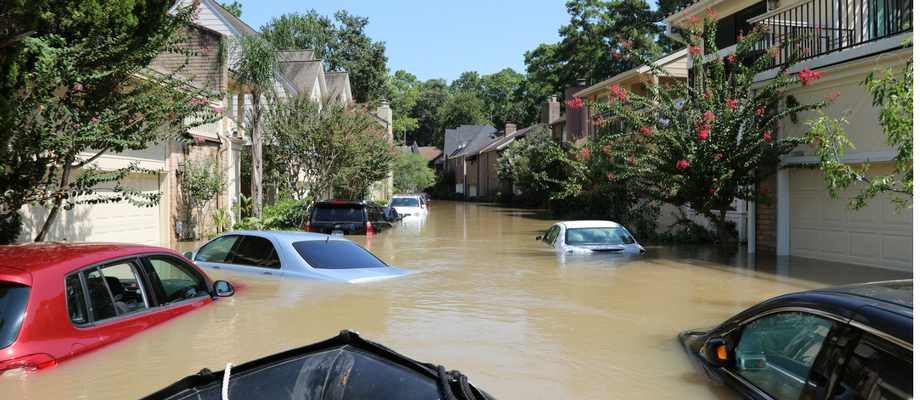
Two weeks ago Hurricane Harvey hadn’t developed into the fearsome storm that dumped more than 4 feet of water over parts of south Texas. So when one of my coworkers went through with a planned weekend vacation, we didn’t worry. But we didn’t see her again for nearly a week, four days later than she planned to return home.
Now we’re two days away from the time forecasters say Hurricane Irma likely will hit south Florida.
My co-worker’s flight to Houston left an hour earlier than flights for her friends. Their flights got rescheduled to Saturday and then were canceled. But on Friday the Texans she saw once her plane landed weren’t too worried. “They didn’t think it would be that bad,” she said.
‘Expect a lot of rain,’ they told her. ‘Everything should be fine.’ She even got restaurant recommendations. When Saturday arrived, it was fairly clear with a bit of rain popping up. “I went to a whole bunch of places, but most were shut down,” she said.
Then the storm hit that night.
- At least 70 people died as a result of Hurricane Harvey; (at least 10 have died because of Hurricane Irma already)
- Construction costs to rise, labor shortages possible outside of areas hit by hurricanes
- Hurricane Harvey strands 900 passengers at Houston airports, causing thousands of flight cancellations
- More than half a million registrations for FEMA assistance
- FEMA OKs $193 million in disaster relief services for more than 197,000 survivors
- Cedar Bayou, Texas received 51.88 inches of rainfall, breaking all historical records for the nation
- Losses from Harvey will reach $190 billion, or 1 percent of the nation’s gross domestic product, according to AccuWeather founder Dr. Joel N. Myer.
“It was just a mess. Lights flickering, water dripping from the ceilings,” she said.
When water came through the downtown hotel’s doors, evacuation became necessary. By the time they left, the flood waters had risen at least a foot. Flooding was visible surrounding the area. The only way to travel was by highways.
Even before Irma threatened the Leeward Islands, higher construction costs were predicted as a result of Harvey. Not only supplies of wood, concrete and other construction materials will be in big demand in south Texas. They’ll need labor to rebuild the homes and commercial buildings damaged by the hurricane and the flooding it caused. Add in any disaster areas caused by Hurricane Irma and the problem gets worse.
After a shuttle took her to a shelter a bit farther north, she took a short walk to a nearby hotel, where she waited out the storm. By the time she left on Wednesday, the hotel was running out of food.
During the entire time, airlines kept rescheduling flights. On Saturday night the airline said her Sunday flight got rescheduled to Monday. On Sunday, the airline told her Tuesday. And on Tuesday, they wouldn’t let her reschedule it at all. Her only way to get out would be to fly out of Austin or San Antonio. Renting a car wasn’t an option, but by good fortune, she met a family heading to San Antonio. Only during that three-hour drive was she able to schedule a flight on Wednesday. The high demand for flights made her trip another struggle. From San Antonio, she flew to Chicago. Then she flew out of the Windy City back West to Denver. Finally, a flight from Denver got her to Atlanta around midnight. By Thursday morning she was back in Izenda’s offices.
According to USA Today, based on data collected by FlightAware, the hurricane caused cancellations of more than 13,300 flights from Aug. 25 through Sept. 5. The majority of those were flights to or from airports in Houston.
A week later, another co-worker shares tales of her father and her sister figuring out what to do about Hurricane Irma. Her dad drove by 10 gas stations in Miami before finding one with gas. After a two-hour wait for his turn at the pumps, he discovered only premium gas was available. Police were on hand to keep things orderly, only allowing one car at a time near each pump.
State and local officials didn’t post evacuation notices on Wednesday, but they came this (Thursday) morning. He didn’t wait, though. He headed for Orlando, where her sister and her family live.
In Orlando, her sister and brother-in-law bought water last weekend. That was smart because it took visits to four separate stores on Tuesday night to find enough food. They’ll either stay in their townhouse or go to her brother-in-law’s parent’s house to weather the storm. Her brother-in-law planned to spend today helping board up his parent’s home. They’ve already got a generator ready.
But their worries center on family members in Puerto Rico who were unable to flee Hurricane Irma. The U.S. territory escaped the worst of the storm when Irma’s eyewall passed to the north of the island. But more than 1 million people are without power, and repairs could take months.
The National Weather Service, insurance companies, government agencies and every business affected will spend the next weeks and months going over data about these hurricanes and their effects. They’ll look for ways to improve responses to the disaster, how to cut losses caused by flooding and wind damage. And they’ll use the data to try to predict what will happen the next time, and how they can lessen the damages. As unpredictable as the weather can be, the analytics will be daunting. But today’s analytics platforms work much better than the paper based tools used in the past. They’ll find answers quicker with modern BI solutions than spreadsheets some businesses still use.

